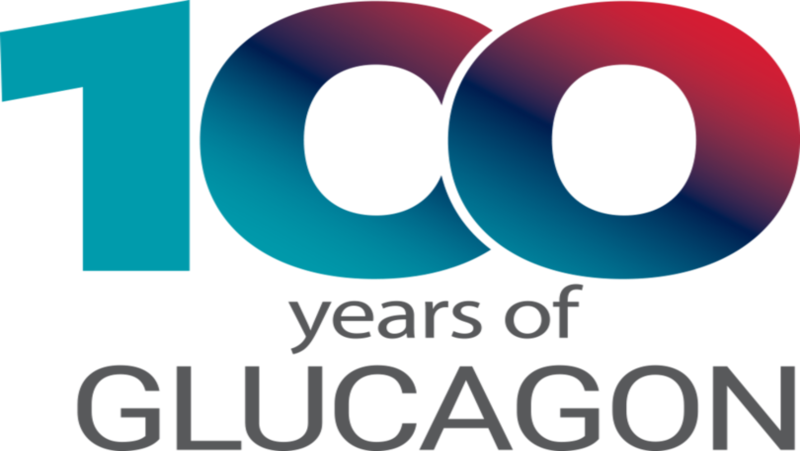100 years later: Celebrating the history of glucagon in treating severe lows
Learn how recent innovations have made this diabetes treatment simpler to administer

Since its discovery 100 years ago in 1922, glucagon has made a significant impact in diabetes care management. But if you’re new to diabetes, you might be wondering, what is glucagon? And what is glucagon used for?
A key hormone formed in the pancreas that stimulates the release of sugar into the blood, glucagon prevents blood sugar levels from dropping too low (whereas insulin helps keep blood sugar from rising too high). For anyone with diabetes, their family and their caretakers, monitoring and managing blood sugar levels to make sure that insulin and glucagon levels are in balance is a daily task.
While the commercialized use of insulin has been widespread in diabetes management since the 1960s, the latest advancements in glucagon treatment for severe hypoglycemia have occurred more recently.
What is hypoglycemia?
Hypoglycemia, also referred to as low blood sugar, occurs when blood sugar levels drop below 70 mg/dL. Anyone taking insulin to treat type 1 diabetes or type 2 diabetes is at risk for mild, moderate or severe hypoglycemia. While mild or moderate hypoglycemia can be corrected with sugar (a sugary food or beverage), severe hypoglycemia requires prescription glucagon administration.
Hypoglycemia symptoms
- Pale skin, shakiness or dizziness
- Sweating
- Irregular heartbeat
- Muscle weakness
- Headache
Severe hypoglycemia symptoms
- Confusion
- Inability to speak, eat or drink
- Loss of coordination
- Seizures or convulsions
- Loss of consciousness
Awareness of the symptoms of hypoglycemia and severe lows is key to being able to act quickly. So is making sure that family, friends and caregivers know how to administer rescue glucagon — so the low can be safely treated. The Endocrine Society’s Know Hypo campaign has helped increase awareness of severe hypoglycemia, encouraging patients and their caregivers to take action sooner with glucagon to prevent complications.
History of glucagon
For decades, emergency glucagon kits — which contain a vial of glucagon powder and a syringe filled with saline — were the only commercially available options for treating severe lows. But in 2019, pre-filled syringes and needleless nasal sprays became available, and in 2020, glucagon autoinjectors came to market. These innovative glucagon treatments have enabled simple administration to treat very low blood sugar.
If you don’t have a glucagon prescription, it’s a good idea to talk to your doctor about which treatment option could work for you. Having glucagon on-hand will help you feel more prepared in the event of severe lows.
From the latest diabetes technology for monitoring insulin levels to ready-to-use glucagon injections, we’ve seen exciting improvements in diabetes care that are removing some of the burdens associated with managing diabetes. Over the last century, rescue glucagon has become a critical, even life-saving medication that helps those with diabetes and their loves ones be prepared in case of a low blood sugar emergency.
Indication
GVOKE (glucagon) is a prescription medicine used to treat very low blood sugar in adults and children ages 2 years and above with diabetes.
Important Safety Information
- Do not use GVOKE if you:
-
- Have a tumor in the gland on top of your kidneys, called a pheochromocytoma because of the risk of a substantial increase in blood pressure
- Have a tumor in your pancreas called an insulinoma because of the risk of low blood sugar
- Are allergic to glucagon or any inactive ingredient in GVOKE. Stop using GVOKE and seek immediate medical attention if you experience any symptoms of a serious allergic reaction such as rash, difficulty breathing, or low blood pressure
- Before using GVOKE, tell your doctor about all the medicines you take and your medical conditions, including if you have not had food or water for a long time (prolonged fasting or starvation), have low blood sugar that does not go away (chronic hypoglycemia), or have a history of a skin rash called necrolytic migratory erythema (commonly associated with glucagon-producing tumors)
- The most common side effects reported in adults are nausea, vomiting, swelling at the injection site, and headache
- The most common side effects reported in children are nausea, low blood sugar, vomiting, headache, abdominal pain, high blood sugar, pain or redness at injection site, and hives
- Inform caregivers on the Instructions for Use of GVOKE, and symptoms of severe hypoglycemia, which include unconsciousness and seizures or convulsions
- Store in original container until time of use, and at room temperature between 68°F to 77°F (20° C to 25° C)
- You are encouraged to report side effects of prescription drugs to the FDA. Visit http://www.fda.gov/medwatch or call 1-800-FDA-1088
Please talk to your doctor and see full Prescribing Information and Patient Information Guide for GVOKE.